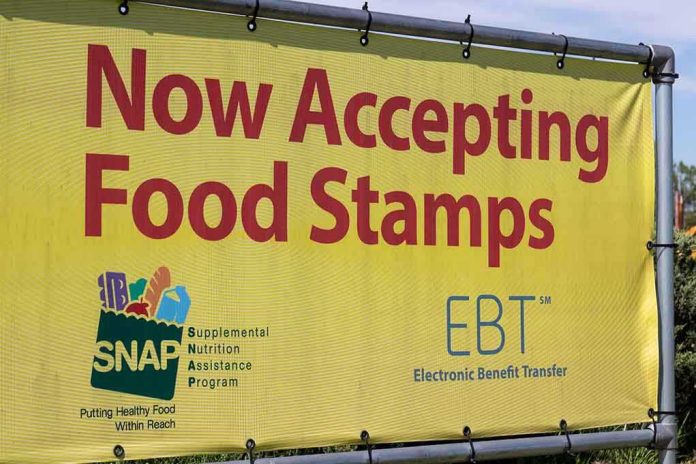
The evolution of SNAP reveals a powerful story of transformation from a modest government initiative to a cornerstone of American food security.
Story Highlights
- SNAP’s origins date back to the Great Depression, addressing surplus and hunger.
- Over the decades, SNAP evolved through significant legislative reforms.
- SNAP serves millions, adapting to economic and policy shifts.
- The program remains a subject of political and social debate.
Understanding SNAP’s Historical Evolution
SNAP’s roots trace back to the 1930s when the Federal Surplus Relief Corporation tackled agricultural surplus and hunger. The first Food Stamp Program emerged during the Great Depression, offering a lifeline to struggling families by enabling them to purchase food stamps with bonus stamps for surplus commodities. This initiative was discontinued during World War II but laid the groundwork for the permanent program established by the Food Stamp Act of 1964.
The 1977 Food Stamp Reform Act marked a turning point by eliminating the purchase requirement, thus enhancing accessibility. Subsequent reforms between 2002 and 2009 modernized the program, introducing EBT cards and restoring benefits to legal immigrants. By 2008, the program was rebranded as SNAP, emphasizing a broader focus on nutrition.
The Role of SNAP in Addressing Food Security
Today, SNAP serves as the largest federal nutrition assistance program in the U.S., reaching millions annually. Administered by the USDA and state agencies, eligibility and benefit levels are determined based on income, household size, and expenses. The program’s ability to adapt to economic fluctuations and policy changes is crucial, as demonstrated during the 2008–2009 economic crisis and the COVID-19 pandemic, when SNAP participation surged to meet increased demand.
SNAP not only reduces food insecurity but also stimulates local economies. By providing low-income families with the means to purchase food, SNAP supports retailers and generates economic activity. This dual impact underscores the program’s significance in both social and economic contexts.
Current Debates and Developments
SNAP continues to be a focal point of political discourse, with debates over work requirements, benefit levels, and eligibility criteria frequently surfacing in Congress. Recent efforts to modernize the program include online applications and expanded EBT use, reflecting a commitment to accessibility and efficiency. Policy responses to economic downturns and public health emergencies have temporarily expanded benefits, highlighting SNAP’s flexibility in addressing urgent needs.
Amidst these developments, advocacy groups like Feeding America and the Center on Budget and Policy Priorities advocate for permanent benefit increases and reduced barriers to access. These organizations emphasize the importance of SNAP in reducing poverty and improving health outcomes, particularly for vulnerable populations.
The Impact and Future of SNAP
SNAP’s impact extends beyond immediate food security. In the short term, it alleviates hunger and improves nutrition, while in the long term, it contributes to better health outcomes and educational attainment for children. The program’s ability to support local economies, reduce healthcare costs, and provide a safety net during economic downturns underscores its value to society.
Looking ahead, SNAP will continue to evolve in response to changing economic conditions and policy priorities. The upcoming debates over the Farm Bill reauthorization and potential SNAP reforms will shape the program’s future, determining how it can best serve millions of Americans in need.
Sources:
Center for SNAP Policy and Advocacy
American Journal of Public Health













